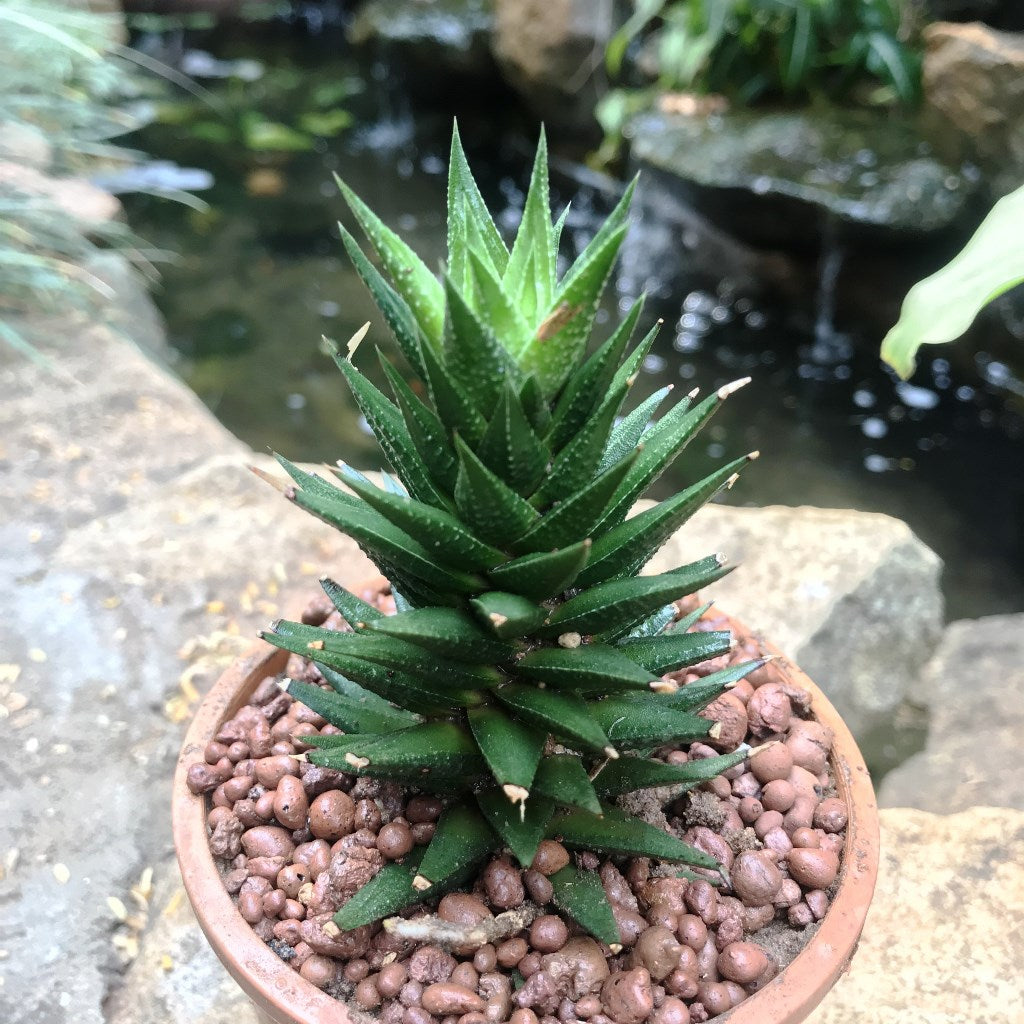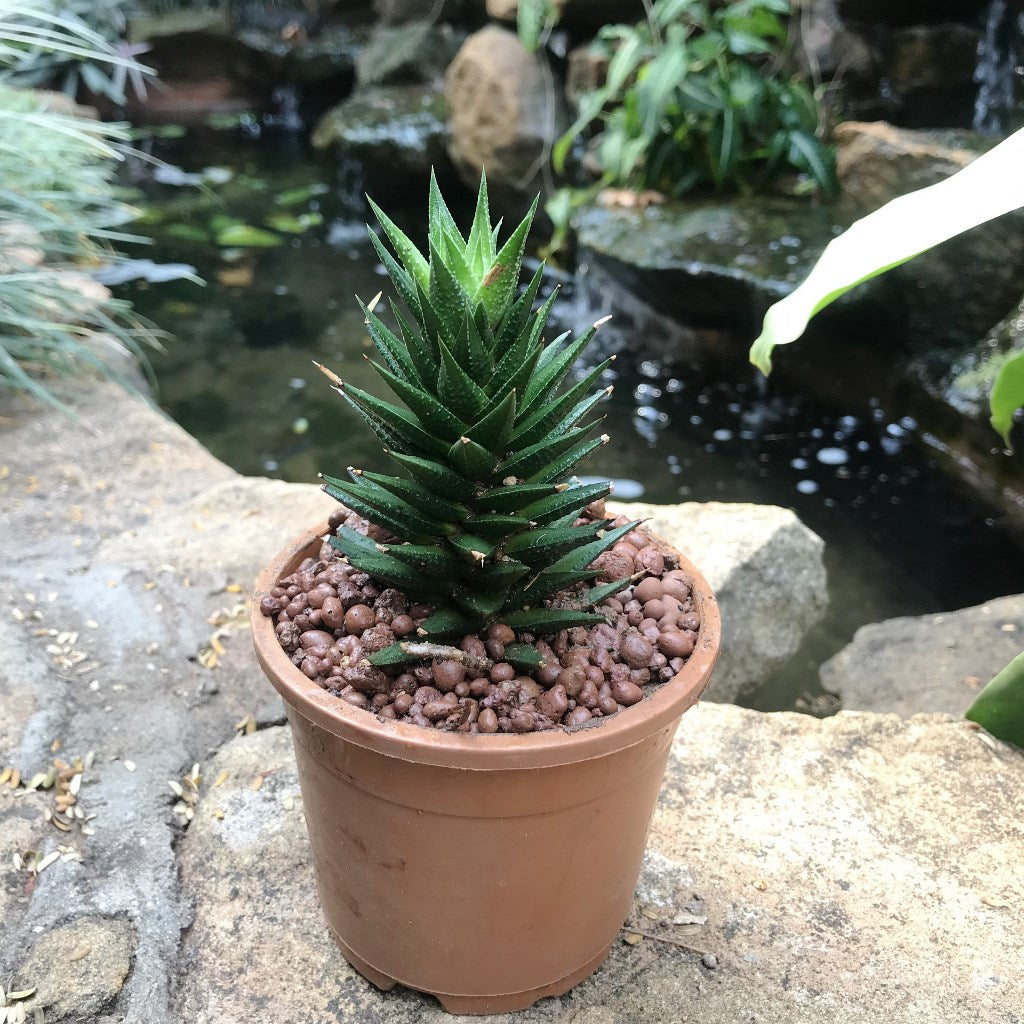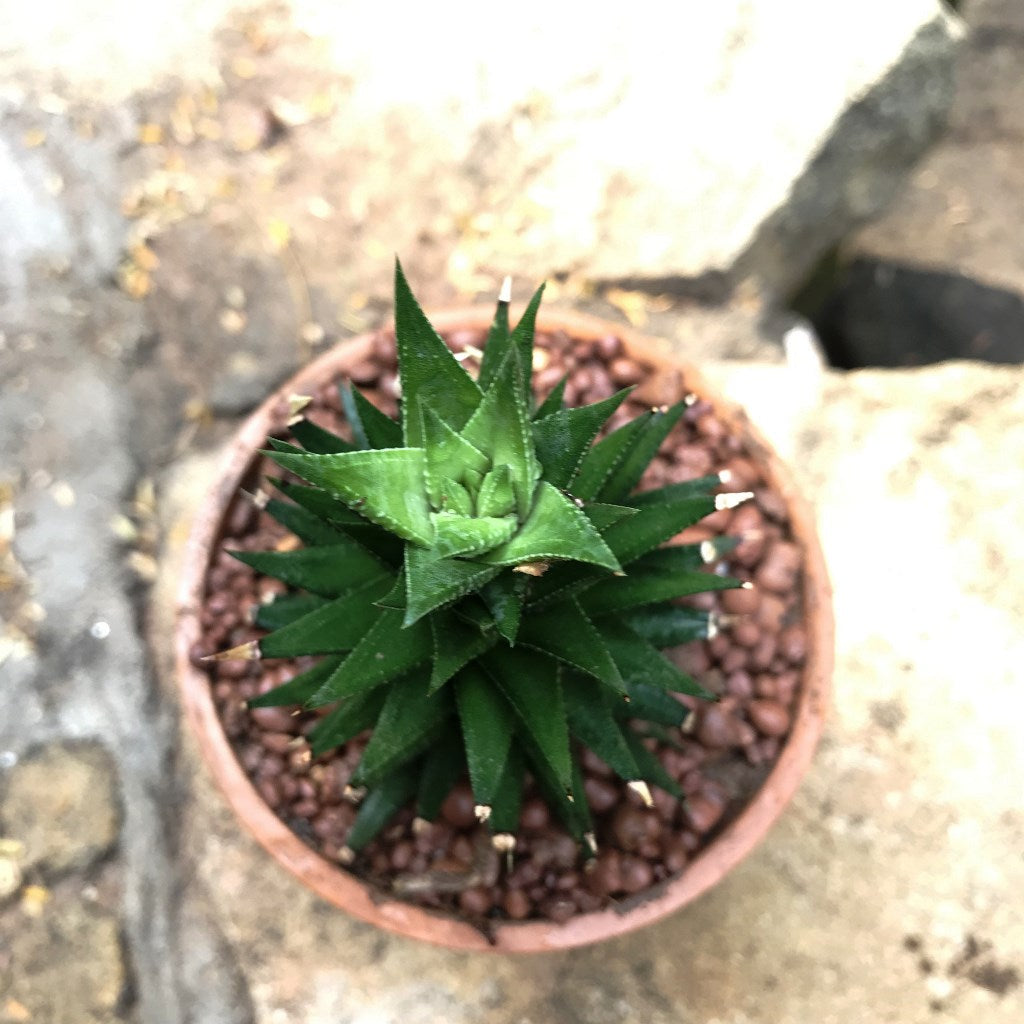Haworthia resendiana
Family
Aloaceae
Origin
South Africa
Description
Haworthia Resendeana is a compact succulent which produce deep evergreen rosettes of leaves and a rough texture and tiny pale speckles. It is probably an hybrid of Haworthia coarctata with clumping columnar rosettes, erect or prostrate, 5 cm in diameter ; leaves 1.5-2 cm, upper side smooth, often keeled.Haworthia are not considered difficult houseplants to grow. They are often grown in small clusters in wide, shallow dishes. Over time, clusters will naturally enlarge as the mother plant sends off small plantlets. When the cluster has outgrown its dish, repot in the spring or early summer into a new wide and shallow dish with fresh potting soil.
Haworthia Resendeana produces a white flower spike in spring.
Environment
Full sun to filtered shade. Average Water Needs; Water regularly; do not over water.
As with all succulents, the most dangerous situation is too much water- they should never be allowed to sit in water under any circumstances. Haworthias will survive on less light than many other succulents, however, in order to produce their colorful foliage, they need some sun.
These decorative little plants can be grown in interesting containers such as tea cups and even miniature baby shoes. Make sure the container had adequate drainage. If it doesn t, it might be a good idea to pop the plant out of its container and add a layer of gravel to the bottom to reduce the wicking action of the soil above.
Landscape Use
Their compact habit makes them ideal as house plants in small pots in sunny positions, or as a feature plant in the garden. Over time they will colonize to produce a wide clump of rosettes making a stunning addition to any rockery, water-wise garden or feature plant in pots.





















